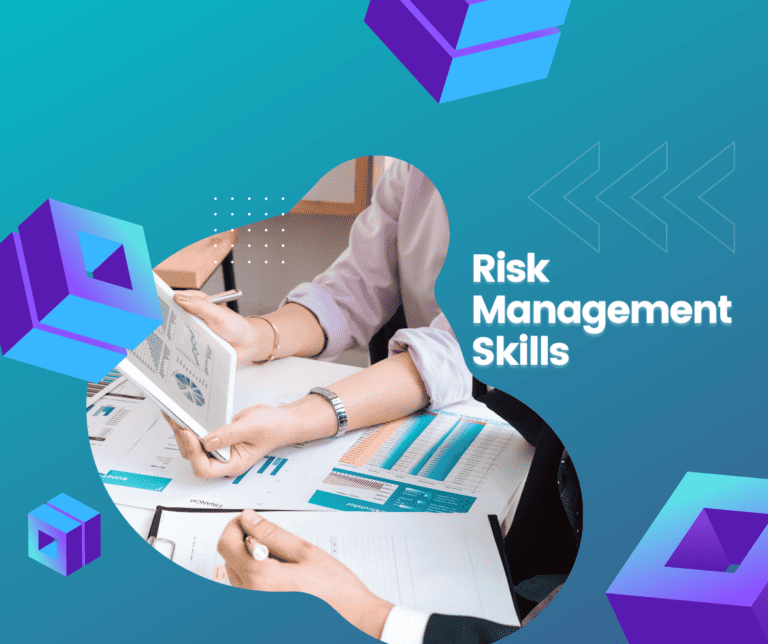Embracing Technology and Innovation in Human and Organizational Development
In today's rapidly changing business landscape, the role of technology and innovation in human and organizational development has become increasingly vital.
As organizations strive to adapt to the evolving needs of their workforce and the market, embracing technological advancements and fostering a culture of innovation has emerged as a critical imperative.
From leveraging digital transformation in HR processes to enhancing employee engagement through tech-enabled solutions, the intersection of technology and human development presents a compelling opportunity for organizations to drive growth and create a sustainable competitive advantage.
This paradigm shift not only reshapes the way we work but also holds the potential to redefine the future of organizational development and the nature of work itself.
Key Takeaways
- Technology has significantly impacted development by driving efficiency, innovation, and connectivity.
- Embracing technology requires strategic foresight, adaptability, and a commitment to sustainable growth.
- Leveraging innovation is a strategic imperative for organizations seeking sustainable growth.
- Digital transformation in HR optimizes human capital management and contributes to organizational growth.
The Role of Technology in Development
The integration of technology has significantly impacted the trajectory of development, ushering in new opportunities and challenges for individuals and organizations alike.
Technology's impact on development in the digital age has been profound. In today's interconnected world, the use of technology has become a cornerstone of progress, driving efficiency, innovation, and connectivity. The digital age has enabled a shift towards more efficient and streamlined processes, from communication and collaboration to data analysis and decision-making. This has resulted in increased productivity and effectiveness across various sectors, ultimately fostering growth and development.
Furthermore, technology has facilitated access to vast amounts of information and resources, leveling the playing field for individuals and organizations to thrive in the global marketplace. However, this rapid evolution has also brought about challenges such as cybersecurity threats, privacy concerns, and the need for continuous upskilling to keep pace with technological advancements.
As we navigate the complex landscape of the digital age, it is imperative to harness the potential of technology while proactively addressing its associated risks. Embracing technology as a catalyst for development requires strategic foresight, adaptability, and a commitment to leveraging innovations for sustainable growth.
Leveraging Innovation for Growth
Leveraging innovation to drive sustainable growth is a strategic imperative for organizations seeking to thrive in today's dynamic and competitive landscape. To effectively leverage innovation for growth, organizations can adopt the following strategies:
- Foster a Culture of Innovation: Encouraging a work environment that values and rewards creativity and risk-taking can lead to the generation of new ideas and solutions. This can be achieved through initiatives such as innovation challenges, cross-functional collaboration, and dedicated time for exploration and experimentation.
- Embrace Emerging Technologies: Organizations should actively monitor and adopt emerging technologies that have the potential to disrupt industries and create new growth opportunities. This may involve investing in research and development, partnering with technology startups, and leveraging big data and artificial intelligence to gain insights and drive innovation.
- Customer-Centric Innovation: To drive growth, organizations should prioritize understanding and addressing the evolving needs and preferences of their customers. By leveraging customer feedback, market research, and design thinking principles, companies can develop products and services that create value and differentiate them in the marketplace, thereby unlocking new growth opportunities.
Digital Transformation in HR
The digital transformation in HR is reshaping the way organizations manage their workforce and talent.
Integrating HR tech, such as AI-driven recruitment tools and employee engagement platforms, is enabling data-driven decision-making for strategic workforce planning.
This shift is not only streamlining HR processes but also enhancing the overall employee experience, ultimately contributing to organizational growth and success.
HR Tech Integration
Embracing digital transformation in HR is essential for organizations seeking to optimize their human capital management and drive sustainable growth in today's rapidly evolving business landscape. HR tech implementation and technology adoption in HR play pivotal roles in shaping the future of work and enhancing organizational effectiveness.
The integration of HR technology enables streamlined processes, data-driven decision-making, and improved employee experiences. It empowers HR professionals to focus on strategic initiatives by automating repetitive tasks, enhancing talent acquisition and retention efforts, and fostering a culture of continuous learning and development.
Leveraging advanced analytics and artificial intelligence in HR tech integration provides valuable insights for proactive workforce planning and enables personalized employee engagement strategies. As organizations navigate the complexities of the modern workplace, embracing HR tech integration is a strategic imperative for driving competitive advantage and organizational success.
Data-driven Decision-making
With the increasing influx of digital tools and technologies, human resource departments are increasingly relying on data-driven decision-making to optimize talent management and strategic workforce planning.
Data-driven optimization allows HR professionals to make evidence-based decisions by leveraging AI-powered insights and predictive analytics. This approach enables organizations to identify trends, forecast future workforce needs, and align talent strategies with business objectives.
By harnessing the power of data, HR teams can gain deeper insights into employee performance, engagement, and retention, leading to more informed and effective decision-making. Furthermore, data-driven decision-making helps in identifying skill gaps, succession planning, and designing personalized development programs for employees.
As the digital transformation in HR continues to evolve, the integration of data-driven decision-making will be essential in driving organizational success and competitive advantage.
Employee Experience Enhancement
As organizations harness the power of digital transformation in HR, the focus shifts towards enhancing the overall employee experience through innovative technological interventions. This strategic approach aims to improve employee well-being and workplace happiness, ultimately leading to increased productivity and retention.
To achieve this, organizations are leveraging digital tools and platforms to:
- Provide personalized learning and development opportunities tailored to individual employee needs, fostering continuous growth and skill enhancement.
- Implement AI-powered employee feedback mechanisms to gather real-time insights, enabling proactive intervention to address concerns and improve overall satisfaction.
- Utilize virtual reality (VR) and augmented reality (AR) technologies to create immersive onboarding experiences, remote team-building activities, and virtual wellness programs, promoting a sense of connectedness and well-being among employees.
Advancements in Learning and Development
In the ever-evolving landscape of human and organizational development, the ongoing advancements in learning and development continue to play a pivotal role in shaping the future of work and the capabilities of individuals and teams.
The rapid progress in e-learning platforms has revolutionized the way individuals acquire knowledge and skills. Advancements in e-learning have led to personalized, interactive, and engaging learning experiences, catering to different learning styles and preferences.
Moreover, virtual reality (VR) training has emerged as a game-changer in learning and development. It provides an immersive and realistic environment for employees to practice and refine their skills, particularly beneficial in high-risk or complex scenarios.
The integration of VR training into organizational learning programs enhances knowledge retention and application by offering a hands-on approach. Additionally, it enables organizations to conduct training in a cost-effective and scalable manner, breaking the barriers of geographical limitations.
As technology continues to advance, the potential for e-learning and VR training to further transform learning and development in the workplace is substantial, promising a more effective and efficient approach to skill-building and knowledge acquisition.
Technology-Enabled Talent Acquisition
The evolution of learning and development technologies has paved the way for a paradigm shift in talent acquisition. Technology-enabled strategies are redefining the recruitment landscape and shaping the future of organizational talent acquisition. As organizations embrace the digital age, technology has become integral to the talent acquisition process, revolutionizing traditional methods and enhancing efficiency and effectiveness.
The current landscape of technology-enabled talent acquisition encompasses several key elements:
- Automated Screening: Advanced algorithms and machine learning capabilities are being utilized to streamline the initial screening process. This enables organizations to efficiently sift through large volumes of applications and identify the most suitable candidates.
- Virtual Onboarding: With the increasing prevalence of remote work and distributed teams, virtual onboarding solutions have become essential. These platforms facilitate seamless integration for new hires, providing access to training materials, organizational resources, and opportunities for virtual interaction with colleagues and mentors.
- Data-Driven Decision Making: Technology enables the collection and analysis of vast amounts of data throughout the talent acquisition process. This data-driven approach empowers organizations to make informed decisions, optimize recruitment strategies, and continuously improve the candidate experience.
As technology continues to advance, the integration of innovative solutions in talent acquisition will undoubtedly play a pivotal role in shaping the future of organizational recruitment practices.
Impact of Automation on Workforce
The impact of automation on the workforce presents challenges related to job displacement, but also opportunities for reskilling and upskilling the workforce.
As organizations integrate more automation into their processes, the need for human-machine collaboration becomes increasingly important.
Understanding the implications and strategies for managing the impact of automation on the workforce is crucial for organizations to remain competitive and adaptive in the evolving technological landscape.
Job Displacement Concerns
As automation continues to advance, the potential for significant workforce disruption and job displacement looms large, necessitating a strategic and forward-thinking approach to address these concerns. In considering job displacement concerns, it is crucial to adopt a proactive stance and implement measures to mitigate the impact of automation on the workforce.
Key considerations include:
- Upskilling and Reskilling Initiatives: Investing in training programs to equip employees with the necessary skills to adapt to changing job requirements and technological advancements.
- Diversification of Employment Opportunities: Exploring opportunities to diversify job roles and create new positions that complement rather than compete with automation.
- Collaborative Human-Machine Work Environments: Fostering environments where humans and machines collaborate synergistically, leveraging the strengths of both to optimize productivity and innovation.
Addressing job displacement concerns through these strategic initiatives will not only facilitate workforce adaptation but also pave the way for a more sustainable and resilient employment landscape.
Reskilling and Upskilling
In addressing the evolving landscape of workforce dynamics impacted by automation, the imperative to prioritize reskilling and upskilling initiatives becomes increasingly pronounced. Organizations must proactively identify skill gaps and design targeted training programs to equip employees with the competencies needed to thrive in the digital age. Continuous learning is pivotal, enabling individuals to adapt to technological advancements and pursue career progression. Here's a table highlighting the key components of effective reskilling and upskilling strategies:
| Reskilling and Upskilling Strategies |
|---|
| Skill Gap Identification |
| Targeted Training Programs |
| Continuous Learning |
Human-Machine Collaboration
With the unprecedented advancements in automation and artificial intelligence, the evolving landscape of workforce dynamics necessitates a strategic examination of the impact on human-machine collaboration. As organizations navigate the integration of technology into their operations, several critical considerations emerge:
- Seamless Integration: Visualize a production floor where robots and human workers seamlessly collaborate, with each entity leveraging its unique strengths to optimize efficiency.
- Ethical AI Implementation: Envision a future where ethical considerations are at the forefront of AI implementation, ensuring that human values and rights are preserved in all human-robot collaborations.
- Skill Enhancement: Picture a scenario where automation augments human capabilities, leading to the evolution of roles and the creation of new opportunities for skill enhancement and professional growth.
This strategic analysis of human-machine collaboration emphasizes the need for ethical and seamless integration of technology to drive workforce development and organizational success.
Enhancing Employee Engagement Through Tech
Utilizing advanced technological tools and platforms, organizations can strategically enhance employee engagement to foster a culture of innovation and productivity. By leveraging technology to connect, communicate, and collaborate, companies can create an environment where employees feel more engaged, motivated, and empowered. This, in turn, can significantly impact employee productivity and overall organizational performance.
| Benefits of Enhancing Employee Engagement Through Tech |
|---|
| Improved Communication |
| Increased Flexibility |
| Enhanced Collaboration |
Improved communication through digital platforms facilitates transparency and inclusivity, enabling employees to voice their opinions and ideas freely. Increased flexibility, such as remote work options and flexible scheduling, demonstrates trust in employees, leading to higher engagement. Enhanced collaboration tools allow employees to work together seamlessly, fostering a sense of teamwork and community.
Innovation in Performance Management
Employing cutting-edge methodologies and data-driven approaches, revolutionizing performance management practices has become imperative for organizations striving to maximize productivity and drive sustained growth. In today's dynamic business environment, innovation in performance management is essential for fostering a culture of continuous performance improvement and feedback.
To achieve this, organizations are:
- Implementing Real-time Feedback Mechanisms: Organizations are leveraging technology to create platforms that facilitate continuous feedback loops, enabling timely and constructive performance evaluations. This real-time feedback culture promotes agility and responsiveness, allowing for immediate course correction and development opportunities.
- Utilizing Predictive Analytics: By harnessing the power of predictive analytics, organizations can proactively identify performance trends, potential challenges, and opportunities for improvement. This data-driven approach enables informed decision-making and targeted interventions to optimize performance outcomes.
- Embracing Agile Goal Setting: Agile goal setting methodologies are gaining traction, allowing for greater flexibility and alignment with rapidly evolving business priorities. This approach fosters adaptability, empowers employees to take ownership of their performance, and encourages collaborative goal setting, driving organizational effectiveness and individual growth.
Incorporating these innovative strategies into performance management processes can significantly enhance organizational effectiveness, employee engagement, and overall performance outcomes.
Tech-driven Organizational Culture
In today's rapidly evolving business landscape, the infusion of technology has not only revolutionized performance management practices but has also catalyzed the emergence of a tech-driven organizational culture, reshaping the way individuals and teams operate and collaborate within modern enterprises. This cultural shift is driven by the widespread adoption of technology across all facets of organizational operations, from communication and collaboration tools to data analytics and automation systems. The table below illustrates the key areas where technology is influencing organizational culture:
| Tech Adoption | Cultural Shift |
|---|---|
| Digital Collaboration Tools | Enhanced Flexibility and Remote Work Opportunities |
| Data Analytics Platforms | Data-Driven Decision Making and Performance Evaluation |
| Automation Systems | Streamlined Processes and Increased Efficiency |
This tech-driven cultural shift is characterized by a greater emphasis on flexibility, data-driven decision-making, and streamlined processes. As organizations continue to embrace and integrate advanced technologies into their daily operations, the cultural fabric of the workplace will continue to evolve, fostering a more agile, data-driven, and efficient environment. Embracing this shift will be crucial for organizations seeking to remain competitive and adaptive in the digital age.
Future of Work: Tech and Human Development
The convergence of technology and human development in the future of work presents a paradigm shift that demands a strategic reevaluation of organizational structures and employee skill sets. This shift necessitates a tech-driven workforce adaptation and a proactive approach to future skills development.
- Agile Workforce: Organizations will need to cultivate an agile workforce capable of swiftly adapting to technological advancements. This will require a continuous learning mindset and the ability to embrace change.
- Human-Machine Collaboration: The future of work will see an increased collaboration between humans and machines. It will be essential to develop skills that complement and enhance technological capabilities, such as critical thinking, emotional intelligence, and creativity.
- Data Fluency: As technology becomes increasingly integrated into work processes, employees will need to develop data fluency. This includes the ability to analyze, interpret, and make decisions based on data insights.
The future of work will be shaped by the seamless integration of technology and human potential. Organizations that invest in developing a tech-savvy and adaptable workforce will be better positioned to thrive in an era of rapid technological advancement.
Conclusion
In conclusion, the integration of technology and innovation in human and organizational development is essential for staying competitive in the modern business landscape.
As we look towards the future, we must ask ourselves: how can we continue to leverage technology to enhance learning, talent acquisition, employee engagement, and organizational culture?
By embracing digital transformation and fostering a culture of innovation, we can ensure that we are prepared for the evolving demands of the future of work.







